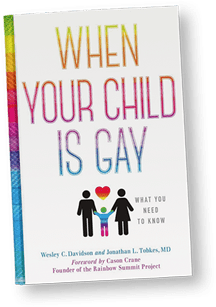I’ve read about Mothers who give hugs to LGBT children ( “free mom hugs”) who are rejected by their straight non-accepting parents. Sometimes these hugging mothers even substitute for the rejecting Mothers at same-sex weddings. Of course, we all know that LGBTQ+ rejected children who can’t go home again form their own families with like-minded non-binary friends whom they are comfortable with.
With those coping strategies, I was surprised to read the results of a survey done at Ohio State University by two researchers, Rin Reczek, Professor of Sociology, and Emma Bosley-Smith, a doctoral student at Ohio State. They reported their findings in a book entitled Families We Keep: LGBTQ People and their Enduring Bonds with Parents (NYU Press:2022)
Why Did the LGBTQ adults feel they had to keep these ties when they weren’t accepted? Seventy-six lesbians, gay, bisexual, transgender and queer adults as well as 44 of their parents were interviewed about their relationships that included heartache and pain, but nevertheless persistence at gaining trust within the family. In order to participate in the survey, LGBTQ adults had to make serious efforts to stay bonded with their parents.
The Ohio State Survey findings centered around three themes:
- “Compulsory kinship,” the feeling that the family is untouchable and should be maintained at all costs” was a common answer. The unique bond between parent and child was also a reason to maintain effort to improve the relationship.
- The second theme was the growth that the LGBTQ adults saw in their parents for acceptance of their sexual orientations. They felt hope and optimism – that with time, the parents would come around to acceptance.
- The third theme was the uniqueness of the child-parent bond. “It cannot be replaced or ended.”
Some interviewees “danced around” the problem:
- Some never mentioned their sexual orientation again to their parents to avoid further conflict.
- Some “stayed in the closet” to avoid any confrontation with their parents.
- Some tried to hide their true selves by marrying the opposite sex.
- Even if they moved away from the family, the LGBTQ adults moved back to the family because of the concept of “compulsory kinship,” and for practical reasons like saving money.
As I said in my co-authored book When Your Child Is Gay: What You Need To Know ( Sterling: 2016), there is no timetable for acceptance of an LGBTQ child. In the chapter, “Denial, co-author psychiatrist, Jonathan L. Tobkes, M.D. gives these guidelines for accepting an LGBTQ child:
- Acceptance of your gay child is often a gradual process that evolves over time, beginning with accepting that your child is definitively and permanently non-binary.
- A more advanced level of acceptance is one in which you do not feel a qualitative difference between your straight child and your gay child.
- Ask your LGBT child the same questions you ask your other children, specifically, don’t avoid the topic of dating and relationships.
- Parents who consider that having a happy child is more important than having a child who fits a certain mold are more likely to accept having a gay child than those who hold firmly to preconceived beliefs.

When Your Child Is Gay: What You Need To Know
For more detailed advice, see book, co-authored with a mother of a gay son and a psychiatrist, Jonathan L. Tobkes, M.D.